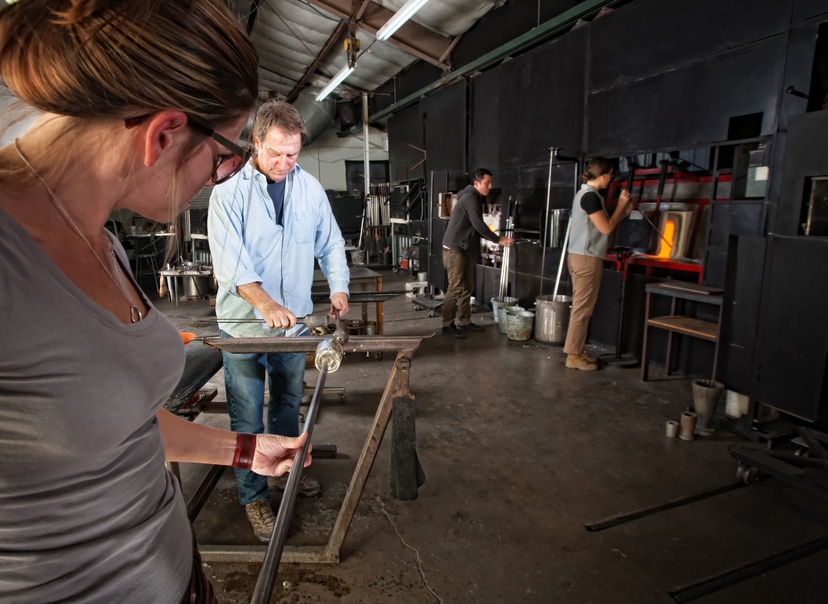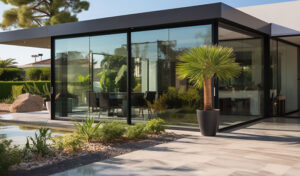You think you know glass products and services. It’s easy to clean. It’s (usually) clear, but can be customized to be just about any color. And it instantly provides an element of sleekness. But what is glass really, how is it made and why is it such a lasting material for safety, decoration and style? You use glass a lot more than you realize—it’s what you scoop your morning jam out of, it’s a major feature on your smartphone and tablet, it helps keep you safe behind the wheel (or at least from bugs flying into your face) and it’s an integral part of your home’s security system.
Surprisingly, glass is a cocktail of a number of minerals, including sand that are all melted at extremely high temperatures. During this process, glass can be customized into a number of things from fiber optics to packing materials. The only “natural glass” is created at a volcano’s mouth thanks to similar high heats. However, that end result is Obsidian, which is a shiny and black stone-like material. Centuries ago, early humans used this product to make spear tips. The very first “glass” was an opaque black, but today it can be any color you can imagine.
Let’s Get Chemical
Chemically speaking, glass is closely related to liquids. Once it reaches room temperature, it becomes so incredibly sticky that it appears like something solid. As it melts, you can watch it become more like its true liquid self. In liquid form, it can be pressed, molded, poured or blown (the art of glass blowing is very appropriately and literally named). The main ingredient of glass is silica, a type of sand, which is mixed with limestone and soda ash.
In order to melt glass, a temperature of 1700 degrees Celsius needs to be reached. You can add in more elements and colors to personalize the glass. Alternatively, once it appears as a solid, glass can be heat-treated, decorated, engraved or coated. However, it’s in the liquid state that it’s shaped to become its “destiny,” whether it’s a car windshield or a martini glass. Whatever it’s meant to be will dictate how it’s composed and how quickly it will be allowed to cool.
Glass Types
The potential for glass is nearly limitless, since you can pick different physical and chemical properties to play with depending on what you’re dreaming up. A number of specialty industries, such as pharmaceuticals, electronics, optics and chemistry have very stringent specifications for their glass creation. In fact, glass and glass ceramics are often the sole material some engineers are able to work with.
As a bonus, glass is completely recyclable. It can be repurposed to become any number of things—without the need for any type of degradation at all. It can be green in more ways than one.





